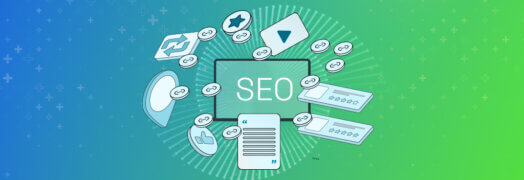We get the question time and time again, “What is a good bounce rate?”
Sigh, the bounce rate. It’s the one piece of data from Google Analytics that still causes a lot of confusion. If you don’t know, the very simplified definition of a bounce rate is the percentage of visitors that arrive on a page of your website and then leave, without browsing other pages. If you think about it, they literally bounce from your website to somewhere else on the Web. The higher the percentage, the more bouncing.
When browsing Bop Design’s analytics, our monthly bounce rate is usually in the 60 – 70% range. Taking bounce rate at face value, one would deduce that many of our visitors aren’t spending time on our site and panic ensues. This way of thinking though doesn’t take into account the type of website BopDesign.com is and how individuals are expected to use it.
Depending on your website, a high bounce rate isn’t necessarily a bad thing. Here are some factors that contribute to an overall high bounce rate:
Landing Pages
If your website has conversion options as a method of lead capture—such as newsletter signup pages, free trial downloads, coupons and more—then these pages will naturally have a high bounce rate. The entire point of these pages is for an individual to complete a form, receive an item and go on their way. Hopefully you have steps in place to follow up with them and bring them back another time.
Blog Posts
Our website features a blog, which we update on a weekly basis. It’s great for attracting new visitors and improving our SEO. We also ensure we have options in place for a visitor to read more (e.g. related blogs links to read at the bottom of the blog posts) or links to different places of our website (e.g. view our portfolio, download a content offer). Still, some visitors are simply interested in reading the piece of content, educating themselves and continuing on their way.
Traffic from Twitter
Many referral visits from social media result in higher bounce rates, but we’ve noticed with our websites that Twitter consistently outranks any other social media platform. This is due to the nature of a Twitter user—short bites of content result in visitors who are only interested in gleaning the page they clicked on and then returning to Twitter.
High Organic Traffic
Oftentimes a website with a high percentage of organic traffic will experience a higher bounce rate, especially if your business is niche but could be categorized under a broader term (and who doesn’t think their business is special from everyone else?). For example, recruitment firms that only operates in specific industries or consultants for particular business models. General keyword searches could still pull your website, resulting in an individual reading about your expertise, deciding you’re not the right fit and leaving.
Mobile Visits
A website with a higher percentage of mobile visits can also experience a higher bounce rate, especially if your website isn’t responsive or mobile optimized. This is common as a mobile use is typically on the go or multitasking, meaning less time is spent browsing a website.
So what should you be measuring instead of bounce rates? We’re glad you asked:
- Average time spent on site – if visitors typically bounce from this landing page, but are spending a minute or longer on the page, that means they’re taking the time to read your copy.
- Recurring visits – if direct traffic from your website is bouncing, check to see how many are returning visitors and determine what is making those visitors bounce each time.
- Landing pages – see what pages your visitors are bouncing from most and make the small modifications needed to improve that number. As we said, some pages have a high bounce rate by nature (e.g. landing pages, blog posts), but it higher authority pages such as your homepage or services pages are experiencing a high bounce rate then you should examine carefully why they’re leaving.



